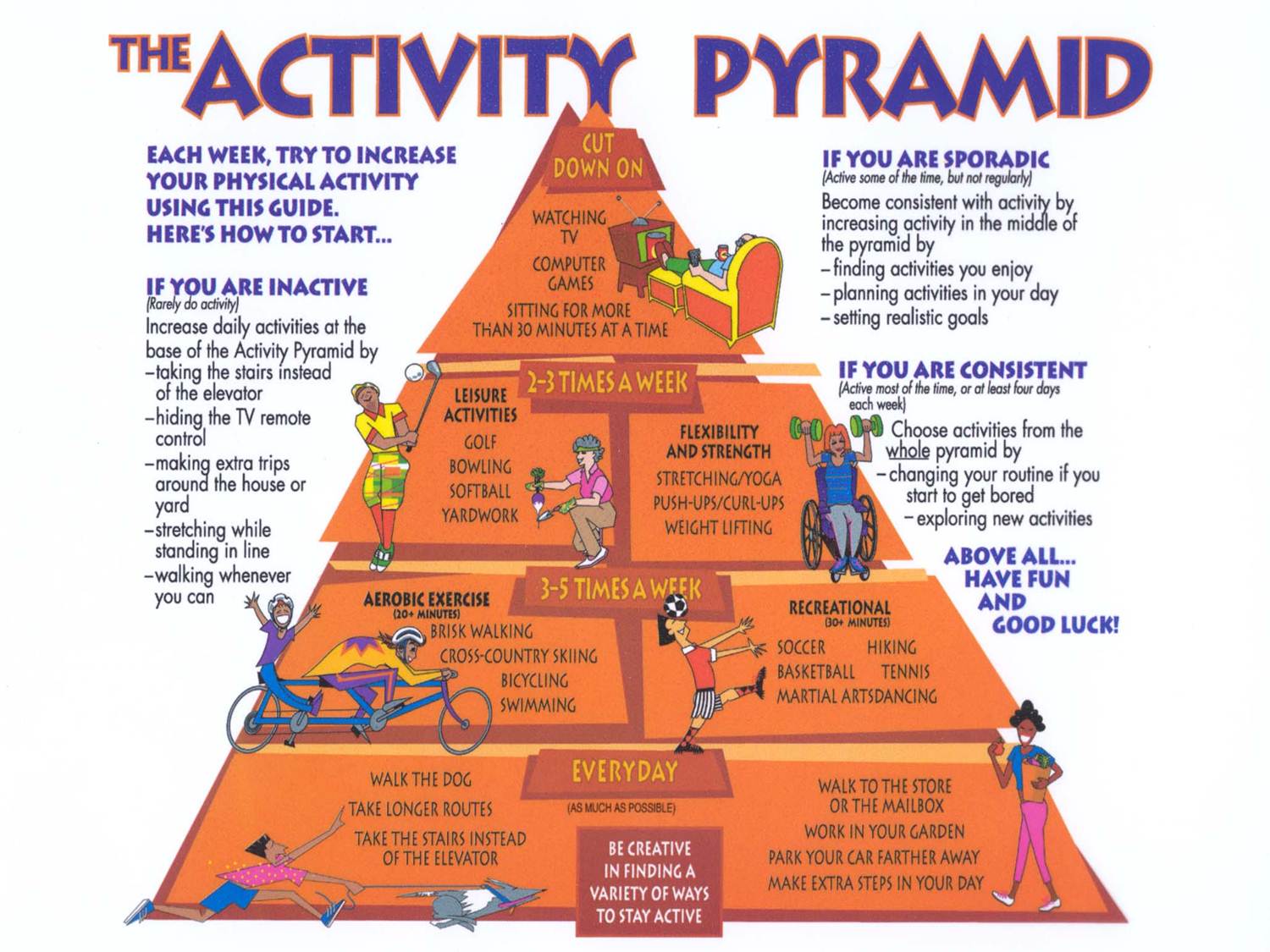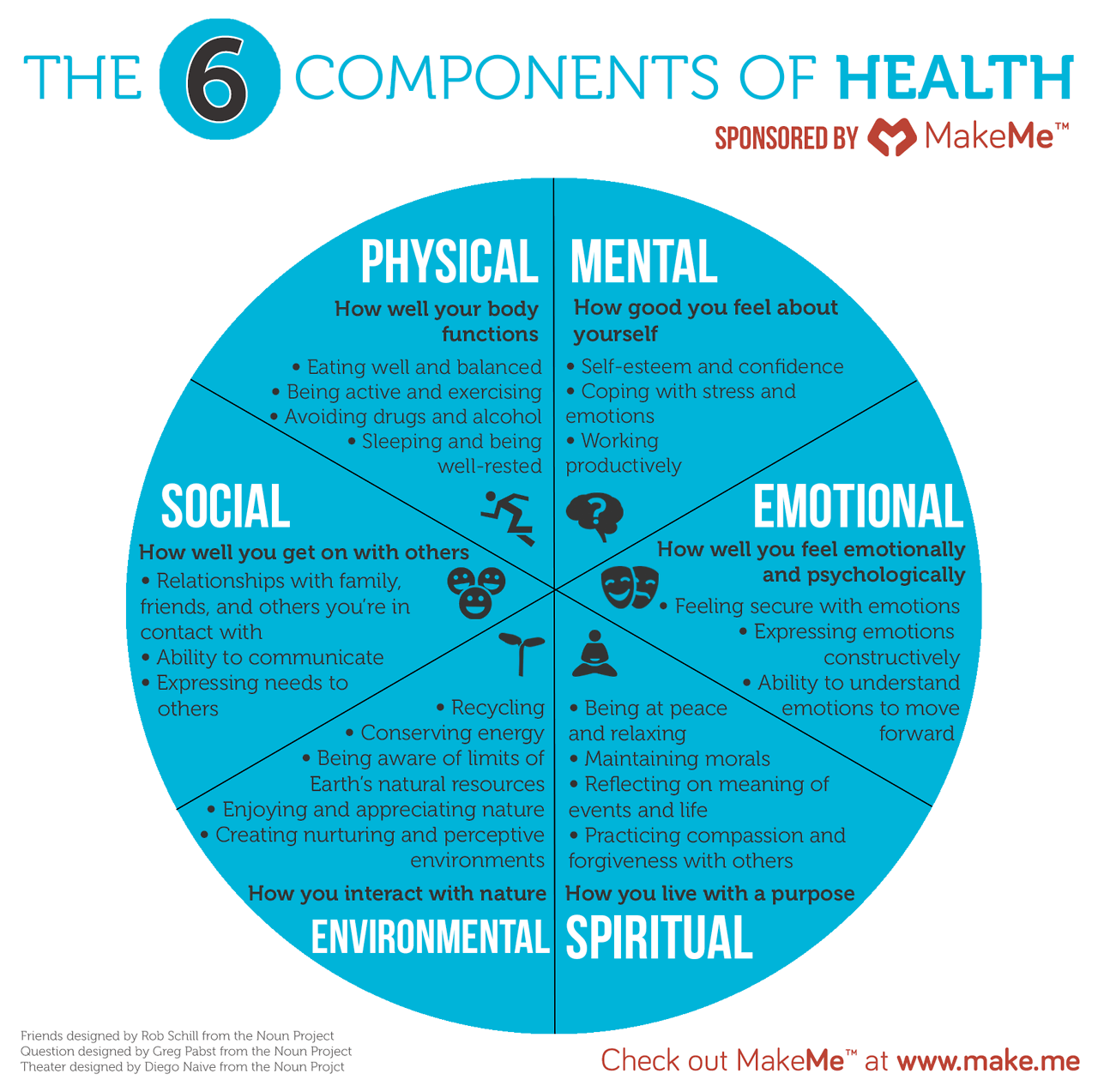Patients who are overweight or obese should be prescribed a volume of 45 to 60 mins of moderate-intensity activity a day (corresponding to approximately 225 to 300 mins/week of moderate-intensity physical activity or lesser amounts of vigorous physical activity) (5,8).
What is the recommended exercise for obesity?
What is the best type of exercise for obesity?
- 150 minutes per week of moderate-intensity aerobic exercise, such as walking briskly.
- Alternatively, 75 minutes per week of vigorous aerobic exercise, such as running or jogging.
- Plus at least 2 days per week of strength training, such as lifting weights.
What is the recommended frequency intensity and duration of exercise for obesity Nasm?
Basic Guidelines for Individuals who are Overweight or Obese
Intensity – 60–80% of maximum heart rate. Intensities may be altered to 40–70% of maximal heart rate if needed. Using the *talk test can help determine exercise intensity. Duration – 40 – 60 minutes daily, or 20 – 30 minute sessions twice daily.
How often should an obese person exercise?
The American College of Sports Medicine recommends that overweight individuals gradually build to a workout of up to 250 minutes of weekly moderate-intensity exercise to increase weight loss. This can take any form, for instance, five 50-minute workouts per week or seven 37-minute workouts a week.
What is the best intensity for weight loss?
Also, while high-intensity exercise is more effective for fat loss than low-intensity exercise on a minute-per-minute basis, low-intensity exercise has the greater overall capacity to produce weight loss because it's possible to do so much more of it.
What is a very low calorie diet for obese people?
If your BMI is greater than 30, then very low-calorie diets are generally safe when used under proper medical supervision. For people who are overweight but not obese (BMI of 27-30), very low-calorie diets should be reserved for those who have weight-related medical problems and are under medical supervision.
PRES. MARCOS' E.O. 23 DOES NOT ABOLISH NTF-ELCAC -- IT WILL HEAR OUT AND INVESTIGATE THE COMPLAINTS AND GRIEVANCES OF LABOR GROUPS
— Thea Tan (@theadtan) May 4, 2023
I just finished reading MARCOS' EO 23. This EO does not abolish NTF-ELCAC contrary to the trending posts from people who didn't bother to read the…
What is the best diet for obese people to lose weight?
Choose minimally processed, whole foods-whole grains, vegetables, fruits, nuts, healthful sources of protein (fish, poultry, beans), and plant oils. Limit sugared beverages, refined grains, potatoes, red and processed meats, and other highly processed foods, such as fast food.
Frequently Asked Questions
How do obese people start dieting?
10 tips for successful weight loss
- Eat varied, colorful, nutritionally dense foods.
- Keep a food and weight diary.
- Engage in regular physical activity and exercise.
- Eliminate liquid calories.
- Measure servings and control portions.
- Eat mindfully.
- Stimulus and cue control.
- Plan ahead.
How does physical activity affect obesity?
Thus, increasing energy expenditure can help reduce excess adipose tissue and obesity. The current guidelines by the American College of Sports Medicine (ACSM) include aerobic or anaerobic exercise. Aerobic exercise (eg, running, cycling, rowing) is an exercise that exhausts the oxygen in the muscles.
How does nutrition affect health and fitness?
Good nutrition can help enhance athletic performance. An active lifestyle and exercise routine, along with eating well, is the best way to stay healthy. Eating a good diet can help provide the energy you need to finish a race, or just enjoy a casual sport or activity.
How does exercise affect eating habits?
Taking up exercise could alter our feelings about food in surprising and beneficial ways, according to a compelling new study of exercise and eating. The study finds that novice exercisers start to experience less desire for fattening foods, a change that could have long-term implications for weight control.
How does food intake affects a person's fitness level?
Eating a good diet can help provide the energy you need to finish a race, or just enjoy a casual sport or activity. You are more likely to be tired and perform poorly during sports when you do not get enough: Calories. Carbohydrates.
FAQ
- What factors affect the rate of metabolism?
- Your metabolic rate is influenced by many factors – including age, gender, muscle-to-fat ratio, amount of physical activity and hormone function.
- What is the physical activity factor?
- Physical Activity Factor (PAF) Volume is determined by multiplying the frequency by the duration (frequency x duration = volume), thereby providing a weekly sum of physical activity in minutes.
- How nutrition and fitness controls a healthy body weight?
- You can reach and maintain a healthy weight if you:
- Follow a healthy diet, and if you are overweight or obese, reduce your daily intake by 500 calories for weight loss.
- Are physically active.
- Limit the time you spend being physically inactive.
- How does exercise affect your body weight?
- When losing weight, more physical activity increases the number of calories your body uses for energy. Using calories through physical activity, combined with reducing the calories you eat, creates a calorie deficit that results in weight loss. Most weight loss occurs from decreasing caloric intake.
- What are the benefits of maintaining a healthy weight?
- Being at a healthy weight can help lower your risk for serious health conditions like type 2 diabetes, heart disease, and high blood pressure. Eating a mix of healthy foods and getting physical activity can help you control your weight — and has many other health benefits as well!
What components make up a physical activity program aimed at providing total fitness?
| What is a healthy weight refers to a body weight? | Healthy or normal weight means a BMI between 18.5 and 24.9. Overweight means a BMI between 25 and 29.9. Obese is a BMI over 30. |
| What is the process of maintaining a healthy body weight? | Achieving and maintaining a healthy weight includes healthy eating, physical activity, optimal sleep, and stress reduction. Several other factors may also affect weight gain. |
| Why body weight affect fitness | By C Drenowatz · 2022 · Cited by 10 — Longitudinal studies further showed that current body weight affects the development of physical fitness [23,24,25] and that poor physical |
| What components make up a physical activity program aimed at providing total fitness? | What components make up a physical activity program aimed at providing total fitness? Aerobic activity, strength training, and flexibility. Most health |
| What is obesity in physical fitness? | Overweight and obesity are defined as abnormal or excessive fat accumulation that presents a risk to health. A body mass index (BMI) over 25 is considered overweight, and over 30 is obese. |
- What are some of the health factors associated to obesity?
- Health Effects of Overweight and Obesity
- All-causes of death (mortality).
- High blood pressure (hypertension).
- High LDL cholesterol, low HDL cholesterol, or high levels of triglycerides (dyslipidemia).
- Type 2 diabetes.
- Coronary heart disease.
- Stroke.
- Gallbladder disease.
- Health Effects of Overweight and Obesity
- What is the health indicator of obesity?
- Body Mass Index (BMI) BMI is an estimate of body fat and a good gauge of your risk for diseases that can occur with more body fat. The higher your BMI, the higher your risk for certain diseases such as heart disease, high blood pressure, type 2 diabetes, gallstones, breathing problems, and certain cancers.
- What is the physical health on obesity?
- Living with obesity can also increase your risk of developing many potentially serious health conditions, including: type 2 diabetes. high blood pressure. high cholesterol and atherosclerosis (where fatty deposits narrow your arteries), which can lead to coronary heart disease and stroke.
- How is exercise related to obesity?
- Physical activity increases people's total energy expenditure, which can help them stay in energy balance or even lose weight, as long as they don't eat more to compensate for the extra calories they burn. Physical activity decreases fat around the waist and total body fat, slowing the development of abdominal obesity.


